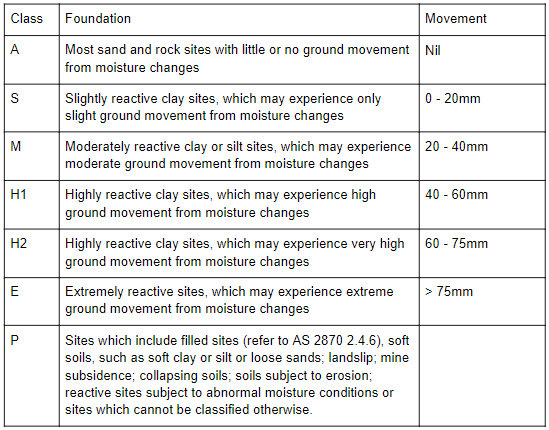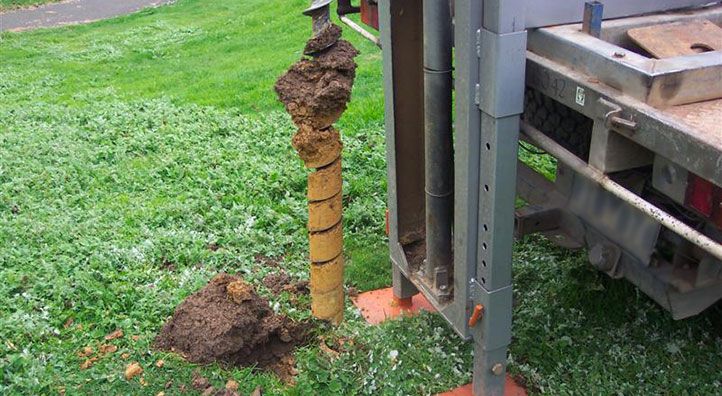When you get into the business of property development, it can often feel like a huge amount of money and time disappears before anything even happens on site. That big block of dirt can hide a multitude of sins.
Some problems are easy to spot, such as an acid sulfate soil overlay. Others may only come to light when a soil test is done. There's also different types of soil classification which can affect the types of foundations you need to build.
So many potential costs and complications are hidden beneath that innocent patch of dirt! Time to talk dirty so that you understand what your experts are telling you and can factor the likely remedial measures into your feasibility spreadsheet.
Acid Sulfate Soil Overlay
This overlay is the first indication you will probably have about potential soil issues, as you should find the overlay when you first start researching the site. The overlay being present isn't a deal breaker, but it also means you need to do more digging (okay, sorry!) before going ahead with the site.

Acid sulfate soils are most common in coastal areas, and are problematic because they contain iron sulfides. The good news is that if they're undisturbed, these soils don't present any risk. But if the soil is disturbed or exposed to the air, the soil reacts with oxygen to release sulfuric acid.
The acid is highly toxic to animals and plants, and can cause damage to buildings. Even worse, it can make other metals in the soil such as aluminium and iron more soluble, adding to the toxic cocktail.
What can you do about it? If your site has this overlay, a soil assessment by a specialist should be near the top of your due diligence list. There are three things you need to determine:
Essentially, you need to determine the level of risk to the natural and built environment, as well as human health, and make sure any need to disturb the soil during the development process is identified. A plan can then be developed to either avoid those outcomes entirely or mitigate the risk. It may be as simple as designing the site layout to avoid disturbing the acid sulfate soil, right through to other assorted mitigation options, and also not buying the site at all if the problem is too costly to rectify.
Soil Classification
Next in line is a soil classification test. This is generally recommended as part of the due diligence process, but may not be done until closer to the design stage. Essentially, the type of soil you have determines the type of footings required for your property development. Footings can range from basic through to extensive, with a price tag to match.
The purpose of testing is to determine if the soil is reactive, and if it is, how reactive. I know what you're going to ask next - what is a reactive soil? A reactive soil generally contains clay, which swells when wet and shrinks when it dries out, resulting in ground movement. The different classification levels relate to how big a movement is likely to occur. The bigger the movement, the more damage is likely to occur, and so more needs to be done at the footings stage to allow for the movement.
Here are the main classifications used:

Be aware that these classifications are based on normal water conditions on site, so they don't include unusual moisture conditions or ground movement such as:
Bottom line - the more reactive the site, the more that needs to be done to both your design and the build for your development project. Higher ratings don't mean you can't build, but extra costs should be allowed for in your feasibility spreadsheet.
The Great Unknowns
This one is everybody's favourite (not!) - essentially it's anything else that might be lurking beneath the surface of your development site. If you're lucky soil tests will be conducted in the right spots on the site and you'll at least know the problems sooner rather than later. Otherwise, they're the types of things that might not be uncovered until you start moving dirt around.
The most common unknown is buried "stuff". Hopefully it's just rubbish, or for old farmland, maybe a farm dump. Potentially you'll need to get the junk removed and then arrange to fill the hole. Maybe even alter your footings slightly. If the junk that's uncovered is asbestos, though, you might find quite a bit more of your contingency getting spent to remove it.
Unexpected rock are also another possibility. They can be broken up and taken away, so they're not likely to prevent the project going ahead, but it's still a cost in both time and money.
 Commercial Sites
Commercial Sites
Although I've been talking about soil issues for residential property development, if you're developing on commercial or industrial land, be aware that while all the above still apply, there's likely to be more research required to uncover any contaminated land issues. Detailing all of them is beyond the scope of this article, but you should at least do a search of your state's Environmental Management or Contaminated Land Registers to see if your site is listed. Also consider getting a contaminated land assessment completed by a qualified consultant to mitigate your risks.
So there you have it - now when your consultants are talking dirty, you'll have a much better idea of what they're talking about!
Some problems are easy to spot, such as an acid sulfate soil overlay. Others may only come to light when a soil test is done. There's also different types of soil classification which can affect the types of foundations you need to build.
So many potential costs and complications are hidden beneath that innocent patch of dirt! Time to talk dirty so that you understand what your experts are telling you and can factor the likely remedial measures into your feasibility spreadsheet.
Acid Sulfate Soil Overlay
This overlay is the first indication you will probably have about potential soil issues, as you should find the overlay when you first start researching the site. The overlay being present isn't a deal breaker, but it also means you need to do more digging (okay, sorry!) before going ahead with the site.
Acid sulfate soils are most common in coastal areas, and are problematic because they contain iron sulfides. The good news is that if they're undisturbed, these soils don't present any risk. But if the soil is disturbed or exposed to the air, the soil reacts with oxygen to release sulfuric acid.
The acid is highly toxic to animals and plants, and can cause damage to buildings. Even worse, it can make other metals in the soil such as aluminium and iron more soluble, adding to the toxic cocktail.
What can you do about it? If your site has this overlay, a soil assessment by a specialist should be near the top of your due diligence list. There are three things you need to determine:
- Is there acid sulfate soil on the property?
- Where is it located?
- Will it be disturbed when you develop the site?
Essentially, you need to determine the level of risk to the natural and built environment, as well as human health, and make sure any need to disturb the soil during the development process is identified. A plan can then be developed to either avoid those outcomes entirely or mitigate the risk. It may be as simple as designing the site layout to avoid disturbing the acid sulfate soil, right through to other assorted mitigation options, and also not buying the site at all if the problem is too costly to rectify.
Soil Classification
Next in line is a soil classification test. This is generally recommended as part of the due diligence process, but may not be done until closer to the design stage. Essentially, the type of soil you have determines the type of footings required for your property development. Footings can range from basic through to extensive, with a price tag to match.
The purpose of testing is to determine if the soil is reactive, and if it is, how reactive. I know what you're going to ask next - what is a reactive soil? A reactive soil generally contains clay, which swells when wet and shrinks when it dries out, resulting in ground movement. The different classification levels relate to how big a movement is likely to occur. The bigger the movement, the more damage is likely to occur, and so more needs to be done at the footings stage to allow for the movement.
Here are the main classifications used:
Be aware that these classifications are based on normal water conditions on site, so they don't include unusual moisture conditions or ground movement such as:
- removal of nearby trees
- ground coverage (eg concreting works)
- water leaks
- inadequate site drainage after building works
- excessive or irregular watering of gardens
Bottom line - the more reactive the site, the more that needs to be done to both your design and the build for your development project. Higher ratings don't mean you can't build, but extra costs should be allowed for in your feasibility spreadsheet.
The Great Unknowns
This one is everybody's favourite (not!) - essentially it's anything else that might be lurking beneath the surface of your development site. If you're lucky soil tests will be conducted in the right spots on the site and you'll at least know the problems sooner rather than later. Otherwise, they're the types of things that might not be uncovered until you start moving dirt around.
The most common unknown is buried "stuff". Hopefully it's just rubbish, or for old farmland, maybe a farm dump. Potentially you'll need to get the junk removed and then arrange to fill the hole. Maybe even alter your footings slightly. If the junk that's uncovered is asbestos, though, you might find quite a bit more of your contingency getting spent to remove it.
Unexpected rock are also another possibility. They can be broken up and taken away, so they're not likely to prevent the project going ahead, but it's still a cost in both time and money.
Although I've been talking about soil issues for residential property development, if you're developing on commercial or industrial land, be aware that while all the above still apply, there's likely to be more research required to uncover any contaminated land issues. Detailing all of them is beyond the scope of this article, but you should at least do a search of your state's Environmental Management or Contaminated Land Registers to see if your site is listed. Also consider getting a contaminated land assessment completed by a qualified consultant to mitigate your risks.
So there you have it - now when your consultants are talking dirty, you'll have a much better idea of what they're talking about!
